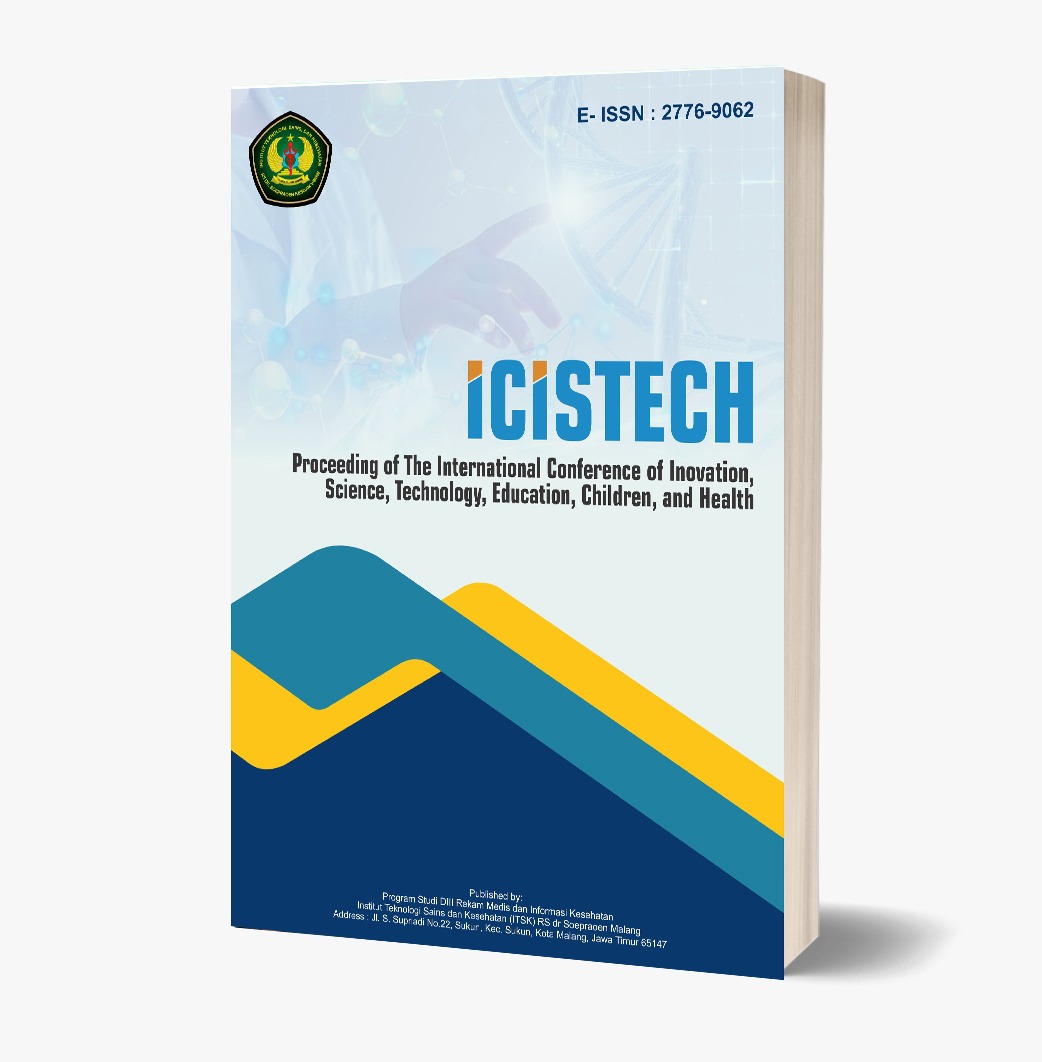Analysis Of Violence In Children During The Covid-19 Pandemic
DOI:
https://doi.org/10.62951/icistech.v3i2.65Keywords:
Violence against children, the covid-19 pandemic, Pandemic-Related Child Neglect, Child Maltreatment PandemicAbstract
This research is a quantitative descriptive study, which thoroughly describes violence against children during the Covid-19 pandemic. The sample of this study was determined using the Non-Probability Sampling with the convenience sampling technique for 165 people. Based on the research results, the handling of violence against children includes 43% physical aspects, 38.8% psychological aspects and 18.2% neglect aspects. The form of treatment that often occurred with hitting amounted to 39.4% and was often done by fathers by 60.6% was a physical aspect. The role of parents, especially fathers, should educate so that children find good examples to be imitated, and the role of mothers as supervisors and provide advice to fathers in educating. Furthermore, researchers can formulate alternative solutions in answering the conditions that occur based on the results of this study through a follow-up study or research.
References
Abebe, G. M. (2020). Emerging and re-emerging viral diseases: The case of coronavirus disease-19 (COVID-19). International Journal of Virology and AIDS, 7(1). https://doi.org/10.23937/2469-567x/1510067
Affleck, G., & Tennen, H. (1996). Construing benefits from adversity: Adaptational significance and dispositional underpinnings. Journal of Personality, 64(4), 899–922.
Alvian, Y., & Laudry, S. (2020). Propaganda Covid-19 terhadap awareness masyarakat Surabaya untuk mengikuti program kerja pemerintah. Jurnal Komunikasi Profesional, 4(1), 27–41. https://doi.org/10.25139/jkp.v4i1.2569
Bhat, R., Singh, V. K., Naik, N., Kamath, C. R., Mulimani, P., & Kulkarni, N. (2020). COVID 2019 outbreak: The disappointment in Indian teachers. Asian Journal of Psychiatry, 50, 102047.
Bishop, M., & Greeff, A. P. (2015). Resilience in families in which a member has been diagnosed with schizophrenia. Journal of Psychiatric and Mental Health Nursing, 22(7), 463–471. https://doi.org/10.1111/jpm.12230
Creswell, J. W. (2017). Research design: Qualitative, quantitative, and mixed methods approaches. Sage Publications.
Dornyei, Z. (2007). Research methods in applied linguistics: Quantitative, qualitative, and mixed methodologies. Oxford University Press.
Fitriani, L., & Gelang, S. B. (2020). Membangun pendidikan ramah anak dalam keluarga di era pandemi Covid-19. Jurnal Kesetaraan Dan Keadilan Gender, 15(1), 32–41.
Halim, A. N. (2003). Anak saleh dambaan keluarga. Mitra Pustaka.
Hurlock, E. B. (2015). Suatu pendekatan sepanjang rentang kehidupan. In R. Ridwan (Ed.), Psikologi perkembangan (5th ed.). Erlangga.
Indonesia, K. K. R. (2020). Pedoman pencegahan dan pengendalian coronavirus disease (COVID-19).
Kandedes, L. (2020). Kekerasan terhadap anak dimasa pandemi Covid-19. Jurnal Harkat, 16(1), 66–76.
Kemen PPA. (2020). Angka kekerasan terhadap anak tinggi di masa pandemi, Kemen PPPA sosialisasikan protokol perlindungan anak. Retrieved from https://www.kemenpppa.go.id/index.php/page/read/29/2738/angka-kekerasan-terhadap-anak-tinggi-di-masa-pandemi-kemen-pppa-sosialisasikan-protokol-perlindungan-anak
Kwako, L. E., Noll, J. G., Putnam, F. W., & Trickett, P. K. (2010). Childhood sexual abuse and attachment: An intergenerational perspective. Clinical Child Psychology and Psychiatry, 15(3), 407–422.
McCusker, K., & Gunaydin, S. (2015). Research using qualitative, quantitative or mixed methods and choice based on the research. Perfusion (United Kingdom), 30(7), 537–542. https://doi.org/10.1177/0267659114559116
Pasalbessy, J. D. (2010). Dampak tindak kekerasan terhadap perempuan dan anak serta solusinya. Jurnal Sasi, 16(3).
Tabi’in, A. (2020). Problematika stay at home pada anak usia dini di tengah pandemi Covid-19. Jurnal Golden Age, Universitas Hamzanwadi, 4(1), 190–200.
Wardani, D. A., & Hendriana, I. (2020). Dicubit dan dimarahi bentuk kekerasan anak paling sering di masa pandemi COVID-19. VOI. Retrieved from https://voi.id/berita/14137/dicubit-dan-dimarahi-bentuk-kekerasan-anak-paling-sering-di-masa-pandemi-covid-19
Watson, R. I., & Lindgren, H. C. (1979). Psychology of the child and the adolescent. Macmillan.
Wisdom, J., & Creswell, J. W. (2013). Integrating quantitative and qualitative data collection and analysis while studying patient-centered medical home models. In Agency for Healthcare Research and Quality (pp. 1–5). https://doi.org/No. 13-0028-EF
Yusuf, A. (2016). Metode penelitian kuantitatif, kualitatif & penelitian gabungan. Prenada Media.
Downloads
Published
How to Cite
Issue
Section
License
Copyright (c) 2023 Proceeding of The International Conference of Inovation, Science, Technology, Education, Children, and Health

This work is licensed under a Creative Commons Attribution-ShareAlike 4.0 International License.













